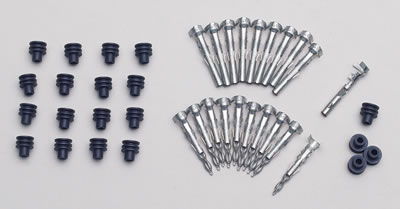Some of those wires looked undersized based on the values of that site. Factoring the crappy wire OEM's use I would set them that high.
Personally I wouldn't do a breaker in all those apps. They can be a real PITA to trouble shoot and sometimes need to be disconnected to reset. I still like the standar ATO style fuse. I've had several problems with the maxi style fuses blowing at way over the rated value. They large spades on them seem to desperse heat really well which causes them to blow slower. I kind of follow a 60 amp minimum but still would rather use a AGU in those apps.
The general rule I always followed when working on OEM wiring.
10 ga - 30 amp
12 ga - 25 amp
14 ga - 20 amp
16 ga - 15 amp
Pretty conservative but I very seldom have any kind of problem.
The style of blocks I like are on this page starting about 1/4 down.
http://www.americanautowire.com/products/Fuse_Panels_Blocks_and_Accessories.cfm
http://www.wranglernw.com carries a large selection of different bank blocks with either single inputs or seperate inputs.
I use the ones in the bottom left for alternators and anything over 100 amps.
Funny, while I was out looking at those fuseable links I finally found the one I had been having a problem with.






